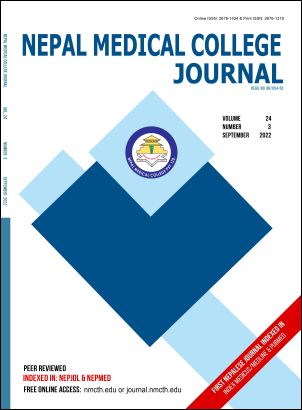Study of Maternal Near Miss Events at Nepal Medical College and Teaching Hospital
DOI:
https://doi.org/10.3126/nmcj.v24i3.48589Keywords:
Maternal near miss, WHO organ dysfunction criteria, maternal mortalityAbstract
Maternal near miss (MNM) is defined as woman who nearly died from complication during pregnancy, childbirth or within 42 days of termination of pregnancy but survives either due to care she receives or due to chance. Maternal near miss and maternal deaths share many characteristics and pathological processes and MNM being more frequent than death, review of MNM gives us an opportunity to assess the quality of obstetric care in the institutions and area of improvement. As maternal morbidity precedes maternal deaths, the study of near miss cases provides understanding of the determinants of maternal morbidity and mortality and help in reducing it. The aim of this study was to assess the MNM events in our institutions based on WHO organ dysfunction-based criteria. A descriptive cross-sectional study was carried out in a tertiary care hospital in Kathmandu over two years period from July 2020 to June 2022 after taking ethical clearance from Institutional Review Committee. During the study period, there were 3493 live births, 40 maternal near miss cases and no maternal deaths. The MNM ratio was 11.45/1000 live births and the prevalence of MNM was 1.13%. Postpartum hemorrhage 11 (27.5%), early pregnancy complications 8 (20%) and hypertensive disorder of pregnancy 5 (12.5%) were the major contributor of MNM. Coagulation/ Hematological system dysfunction 22 (55%) was the most common organ involved in MNM. ICU admission and blood transfusion more than five units were the common intervention done. Effective use of critical care, evidence-based intervention and timely referral will help to reduce maternal morbidity and mortality.
Downloads
Downloads
Published
How to Cite
Issue
Section
License
Copyright (c) 2022 Nepal Medical College Journal

This work is licensed under a Creative Commons Attribution 4.0 International License.
This license enables reusers to distribute, remix, adapt, and build upon the material in any medium or format, so long as attribution is given to the creator. The license allows for commercial use.




